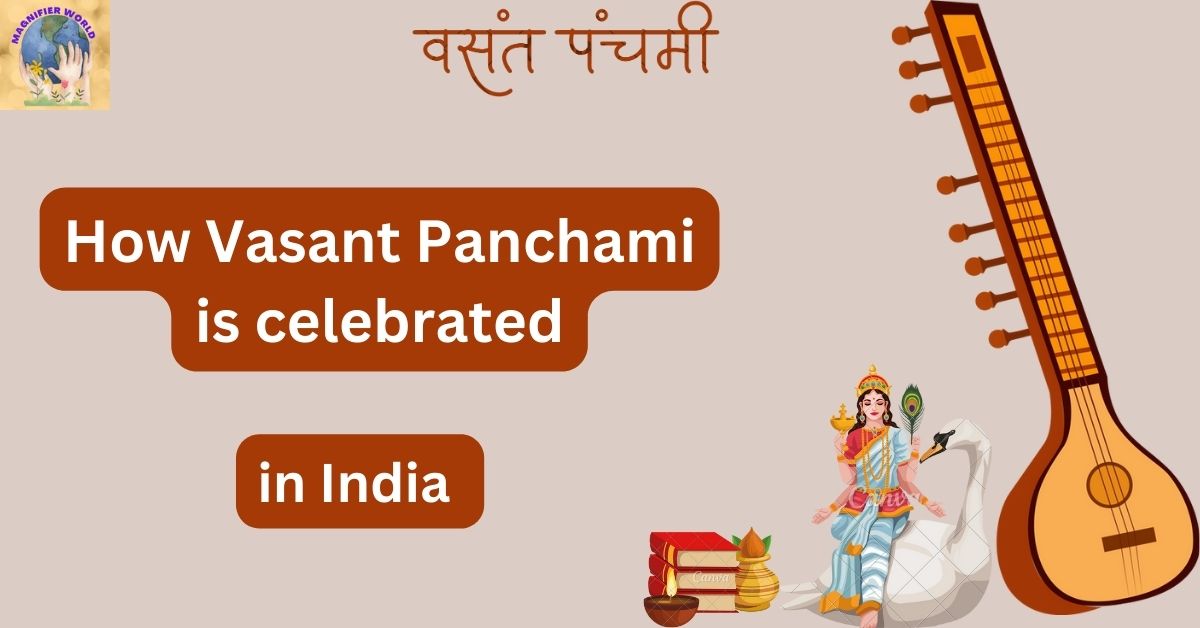Vasant Panchami, sometimes referred to as Saraswati Puja as well as Basant Panchami, serves as a fortunate Hindu festival that is observed throughout Nepal and India. Vasant Panchami, which falls in the latter part of January or just early February during the Hindu calendar month of Magha, signifies the beginning of springtime. It falls on the 5th day (Panchami) which marks the brilliant half (Shukla Paksha).
That holiday is important from a spiritual, cultural, and social standpoint. It unites people to celebrate the start of spring and ask for favours in the areas of knowledge and imagination. We shall discover more regarding Vasant Panchami in this article, including its significance, the reasons behind its celebration, how it is observed, and much more.
The definition of “Vasant Panchami”
This Sanskrit terms “Vasant,” which means spring, combined “Panchami,” which denotes the 5th day of the moon fortnight, are combined to form what is known as “Vasant Panchami.” Basant Panchami signifies a new commencing while an entirely new start as wintertime ends and flowers flourish. All throughout India, but particularly in states including West Bengal, Bihar, the state of Uttar Pradesh, as well as Rajasthan, people observe it with great fervour.
In India, the occasion of Basant Panchami heralds the arrival of spring. Celebrated in praise of the deity of education, music, and the arts, Saraswati, this event is also known as Saraswati Pooja. The celebration takes place on Shukla Paksha, the 5th day during the Magha period, which often occurs in the latter part of January or the beginning of February.
How this festival celebrated
Because the festival heralds the close of winter plus the beginning of the season of flowers. Hinduism accords it a great deal of cultural importance. Worshipping Goddess Saraswati involves wearing yellow clothing and offering her sweets plus flowers in the colour yellow. According to popular belief, the colour yellow stands for wealth, discernment, and hope. The occasion is eagerly and fervently celebrated.
Indians attach great significance to the shade yellow, which stands for happiness and natural light, especially Basant Panchami. It represents hope, new beginnings, and the arrival of spring. The vibrant colour permeates everything throughout the festivities, including the cuisine, décor, and clothing.
Furthermore, yellow is associated with Saraswati, the Hindu deity of wisdom and learning, whose preferred colour is yellow. Consequently, people wear yellow and give the goddess yellow blossoms in an effort to receive her support and advice.
Rituals of Vasant Panchami
One of the main rituals of this celebration is the adoration of Goddess Saraswati. Invocations are made, and followers ask for god’s assistance in achieving their goals in education and the arts.
The goddess represents the arrival of spring and new beginnings. Since she is clad in yellow and has yellow flowers stitched on her clothing. Individuals adorn their homes with yellow flowers especially wear yellow apparel. Many people worship objects that are connected to intelligence and sounds, such books, markers, musical instruments, and notebooks, in an attempt to succeed in the related industry.
A different approach well-known Basant Panchami tradition is kite flying. Individuals of all ages gather in public spaces and on buildings to fly and battle with brightly coloured kites.
Magnet Brains










